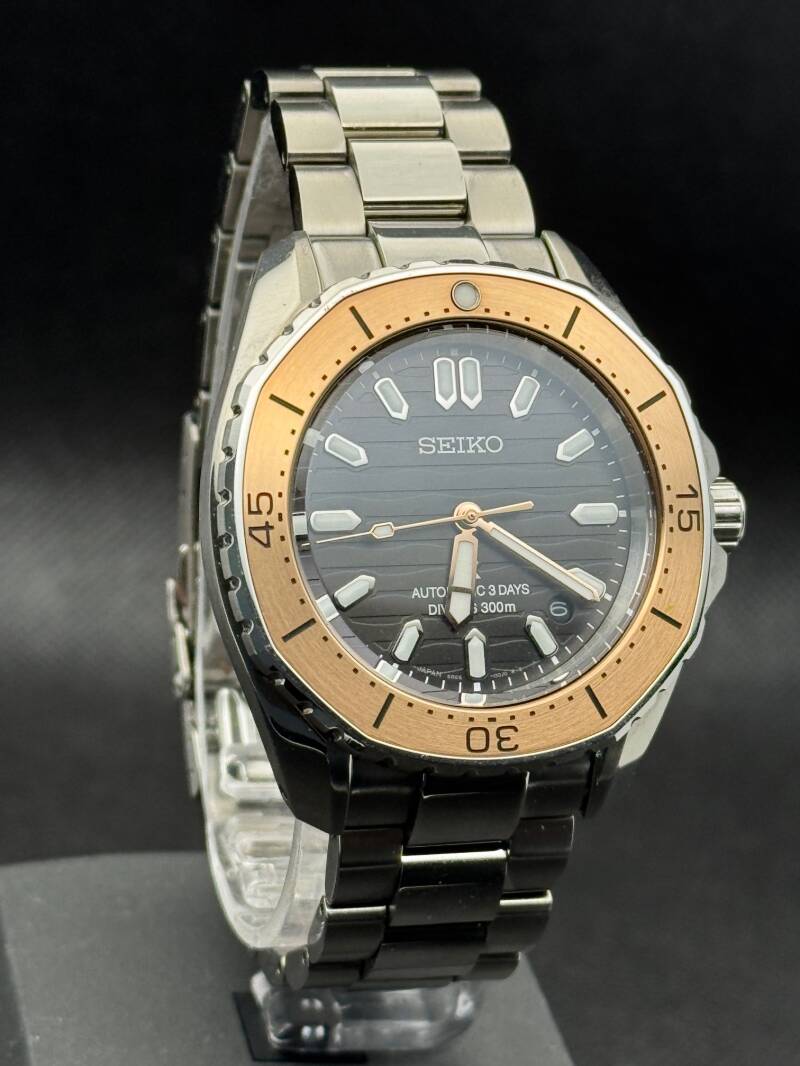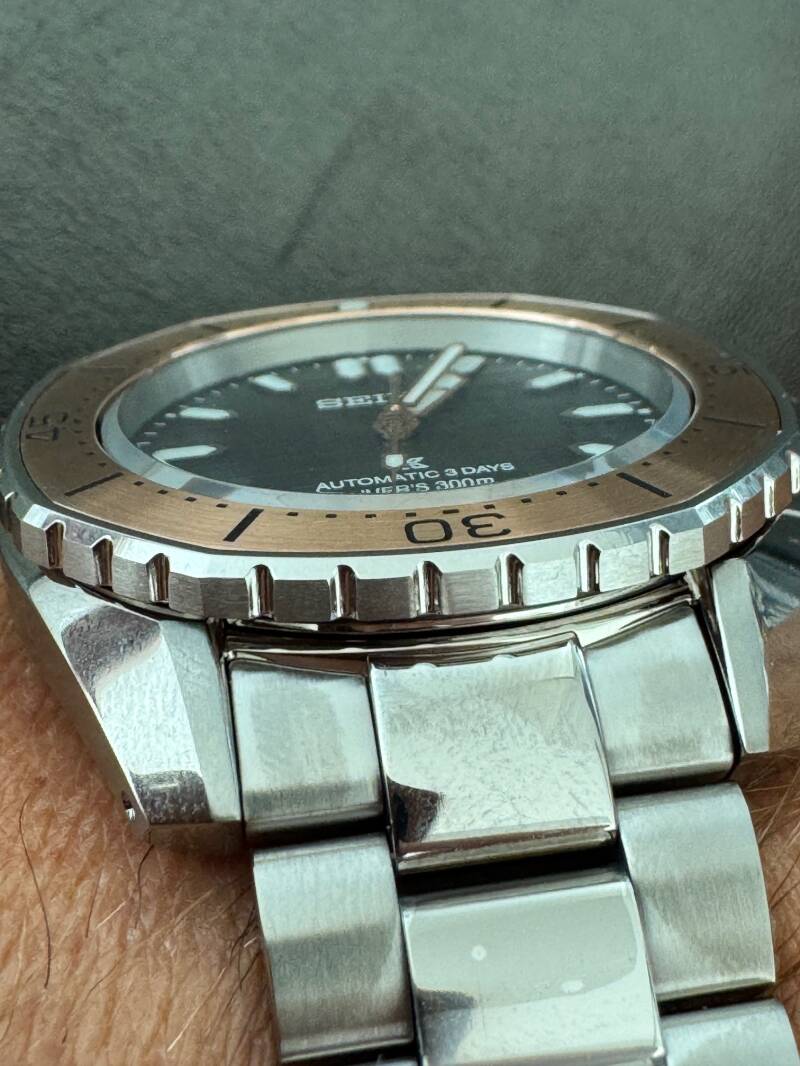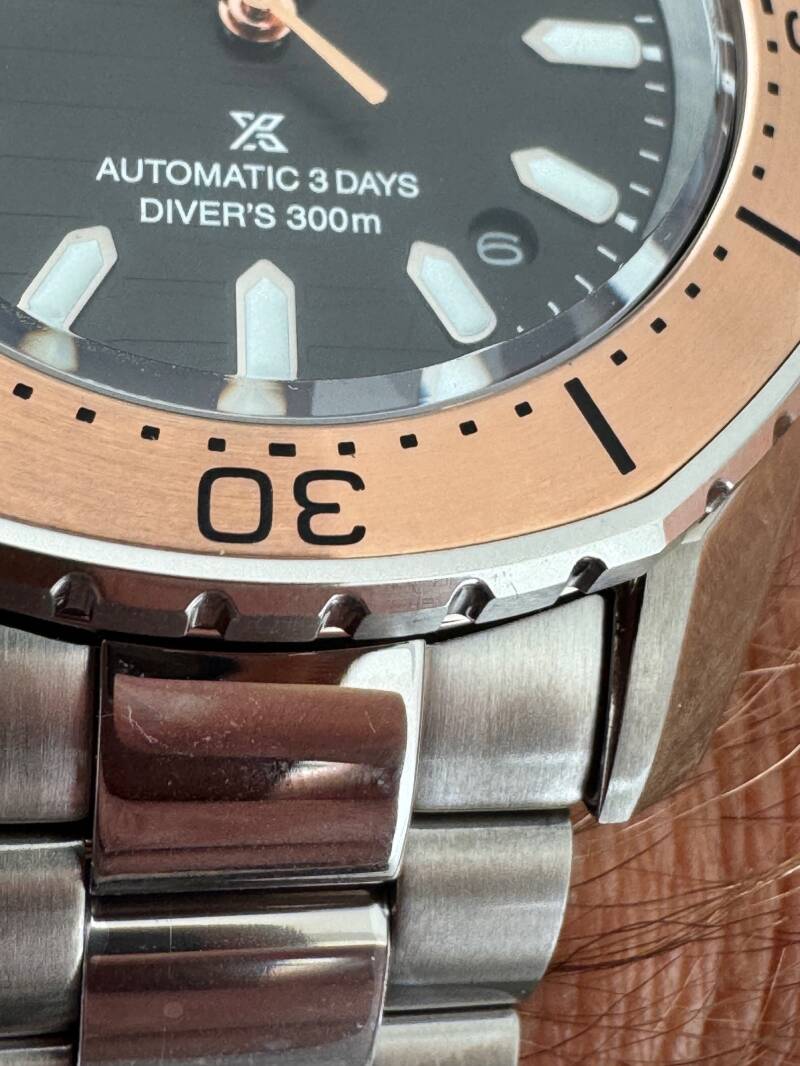
This review marks my 72nd watch article—and if I’ve counted correctly, I’ve now covered at least 106 watches. And yet, despite that decent number, you can't find a single review of a Seiko watch among them. Which is kind of odd, considering Seiko is one of the biggest watch brands in the world.
Of course, Seiko has made plenty of indirect appearances in my reviews. Tons of the watches I’ve covered use Seiko movements—mostly from the NH3x family—but in terms of full-on Seiko watches, the only ones I’ve ever briefly mentioned (and photographed) were my trio of Seiko Bell-Matics, in an article about the Raketa 3031 Alarm.
There are a few reasons why I haven’t written more about Seiko so far. Generally, I like to write about watches that are a bit under the radar, or at least unusual in some way. Most of all, they need to spark that itch in me—the feeling that I want to write about them. So in the past, my focus has mostly been on watches from smaller or newer brands, microbrands, or on pieces that played a special role in my own collecting journey.
That doesn’t mean I don’t appreciate the big names in the watch world—far from it. For example, Seiko has had a consistent presence in my collection: the Seiko “Pogue” (ref. 6139-6002) as part of my space watches, the previously mentioned Bell-Matics in my alarm watch collection… And if my memory serves me, I’ve owned pretty much all of the iconic late-'60s Seiko chronographs at some point. I’ve also had three Astrons, a few solar chronos, at least two Samurais, two Turtles, a Captain Willard, a bunch of Seiko 5s, the 140th anniversary Presage… and probably more I’m forgetting. Right now, I still have the black PVD Land Tortoise.
So no—I’m not someone who’s “anti-Seiko.” But I’m definitely not a Seiko fanboy either. Honestly, Seiko watches usually leave me pretty cold. A lot of it just feels like “been there, done that.” So it’s not surprising that most Seikos I’ve owned eventually got sold off. Sure, a few models had fantastic dials, and Seiko does lume like nobody else—but that’s rarely enough to create a lasting bond between me and a watch. None of them ever felt like something I had to write about. They’re well-known, well-documented, and—frankly—just didn’t inspire me.
To be clear, I’m talking about standard Seiko here. Grand Seiko is a completely different story. I actually own a beautiful Grand Seiko chronograph with the Spring Drive movement—ref. SGBC015—which is for sure one of my top five watches. I even thought about reviewing it, but by the time I got my hands on one, the model had already been on the market for ages, so the moment kind of passed.



Which brings us to this review. Why, after 71 articles, did I finally decide to focus on a Seiko watch—specifically the Seiko Prospex SPB485J1?
Because for once, I felt like Seiko actually did something a bit different. A bit fresh. A bit outside their usual comfort zone. The main reason? That bezel. It’s octagonal… or maybe even dodecagonal? (You be the judge.) And what really caught my eye is the color combo: a copper colored steel bezel insert over a black dial, with copper-edged hands spinning above it. I just really dig the overall vibe.
Alongside this model, Seiko also released two more: the SPB481J1 with a cream dial and black bezel, and the SPB483J1 in full blue-on-blue. Personally, I think the SPB485J1 looks the best—but that’s just my taste. I will say, though, the black dial on this version is probably the least exciting among the three versions. It has these wavy lines across it, but you can barely see them. They're basically invisible unless you’re really looking.


Before buying, I hesitated quite a bit. What held me back was the apparent misalignment between the bezel and the dial—as seen in the official renderings. Bezel alignment issues are a known problem with Seiko, especially on their lower-priced models. But this one looked really bad in the renders. I included a screenshot with my mark to show exactly what bothered me.
Luckily, I have a great relationship with SeriousWatches.com, and I buy most of my Seikos from them. So I reached out to Mark from SeriousWatches and asked if he could check the alignment for me. He sent me a video showing the actual watch, and it looked fine—so I went ahead and bought it. I admit, I was still a little nervous. But since I could return it if I didn’t like it, I figured the risk was worth it.
And… good news! The bezel is properly aligned. Well, mostly. It’s a bit complicated. The sapphire crystal (yes, sapphire—not the usual Hardlex mineral glass Seiko loves to use) isn’t flush with the bezel. It’s slightly domed and angled, which creates optical distortions depending on the angle you're looking from. In the photos below, you’ll see how the same bezel setting can look differently aligned depending on the viewing angle.




Now, back to that bezel shape. Like I said, it’s something between an octagon and a dodecagon. The edges are angled at every full hour, except at 3, 6, 9, and 12, where the transitions are smooth. Between 11–1, 2–4, 5–7, and 8–10, the bezel follows a gentle curve. So overall, you get this interesting blend of round and angular. The edges aren’t sharp, like on the Waldhoff Seawolf I reviewed or the much more familiar TAG Heuer Aquaracer GMT. It’s a unique look—fresh and fun.
The dial is nicely done. I like the index markers—elegant and clean, no random mix of dots, dashes, and triangles. The hands are equally elegant but highly legible. And again, I really love how the hand outlines match the copper tone of the bezel. Great attention to detail.




Seiko clearly wants everyone to know this thing houses the new 6R55 movement, with a 72-hour power reserve. They even printed that fact right on the dial. One thing that bugs me is the date window between 4 and 5 o’clock. It’s a common Seiko placement, but I personally think the watch would’ve looked better without it—or maybe with the date at 6 o’clock instead. Seems like Seiko knew it wasn’t ideal either, so they tried to make it as discreet as possible… maybe a little too discreet, honestly. It’s kind of tiny.
The case is polished and sized just right for most wrists. The official diameter is 41.2mm—but the prominent crown guards make the whole case appear slightly bigger. I measured it myself and the diameter of the bezel from 09.00 to 03.00 is 40.7mm and from 10.00 to 04.00 it is 42.2 mm. Crown guard adds 2mm. Thickness is a manageable 12.5mm, lug-to-lug is 48mm, and the lug width is 20mm. I like the case shape, the curves, and how the surfaces are cut and angled.
Now, if I like the case, I absolutely don’t like the bracelet. The disappointment starts right at the lugs—there’s a visible gap between the end links and the case. It looks… bad. I don’t know if Seiko thinks their customers don’t care, or if there’s some technical reason behind it, but either way—it’s not okay. Then there’s the clasp and diver extension. One micro-adjustment hole. That’s it. And the diver extension? Clunky. Fixed position. Useless for minor wrist size changes throughout the day. Compared to modern extensions that slide smoothly and offer multiple settings, this is prehistoric.
Resizing the bracelet is standard Seiko stuff—collar and pin system. Fairly easy, unless you lose the tiny collar (which is very easy to do if you don’t know it’s there). The links are nicely shaped though, with the center polished segment sitting a bit higher than the brushed sides. Adds a nice bit of visual depth.





To wrap up—while the bracelet wears comfortably and is generally well made, this watch deserves better: aligned end links and a more modern diver clasp. Most decent microbrands wouldn’t dare release a diver watch with this kind of setup.
The in-house 6R55 movement is an upgrade to the older 6Rxx series. 72 hours of power is excellent, though it beats at just 21,600 bph (3Hz). The 6R family sits in Seiko’s mid-range tier, but it's not exactly beloved by the watch community due to past issues. Hopefully, the 6R55 has ironed those out.
Accuracy is rated at -15/+25 seconds a day—similar to what you'd expect from a Miyota 9xxx or standard Sellita SW200-1. Those both run at 4Hz, though, but have shorter power reserves. In real-world use, my SPB485J1 has been performing amazingly well — bassically within less than plus one second per day, so chronometer-level !!
Of course, it also has the expected 300m water resistance and, naturally, killer lume. It’s a Seiko, after all.

On my 19cm wrist, it wears beautifully. The bracelet’s comfortable, the watch sits perfectly. If only I didn’t have to look at that ugly gap between the lugs and the end links :( - I’m already thinking of swapping in a rubber strap sometime soon.
The packaging is standard, but I really liked the small extra box Seiko includes for spare links, extra straps, etc. Nice touch.
Now, let’s talk price. Seiko used to be the king of bang-for-buck watches. Not anymore. Retail price across the EU is €1,200. That’s become standard for a mid-range Seiko with a sapphire crystal and 6R movement—but in my opinion, it’s too high. At that price point, the competition is fierce. You can get plenty of similarly specced Swiss-powered watches for less (like the Oceaneva Deep Marine Explorer II or the Venezianico Nereide—both of which I’ve reviewed), not to mention tons of Miyota 9xxx-equipped options (Waldhoff Seawolf, for example).
Prices on Chrono24 are a bit more down-to-earth—around €1,000—which feels fair, all things considered.
Nevertheless, hats off to Seiko for daring to shift gears with this one. It’s not a revolution—no radical departure from their DNA—but it’s definitely a welcome evolution. They didn’t reinvent the wheel—but let’s be honest, with an eight/twelve - sided bezel like this, maybe they kind of did? And by this they stepped off their well-worn path just enough to create something that feels fresh, different, and genuinely enjoyable to wear. Sometimes, a little geometric rebellion is just what a brand like Seiko needs—to remind collectors like me what they’re still capable of.
I really enjoy wearing it. Time will tell how long it stays in my collection—but it’s got a solid chance to stick around and be one of the few Seikos proudly representing the brand in my watch box.

P.S. Big thanks to Mark at SeriousWatches for all the help and quick replies during the buying process!








Add comment
Comments